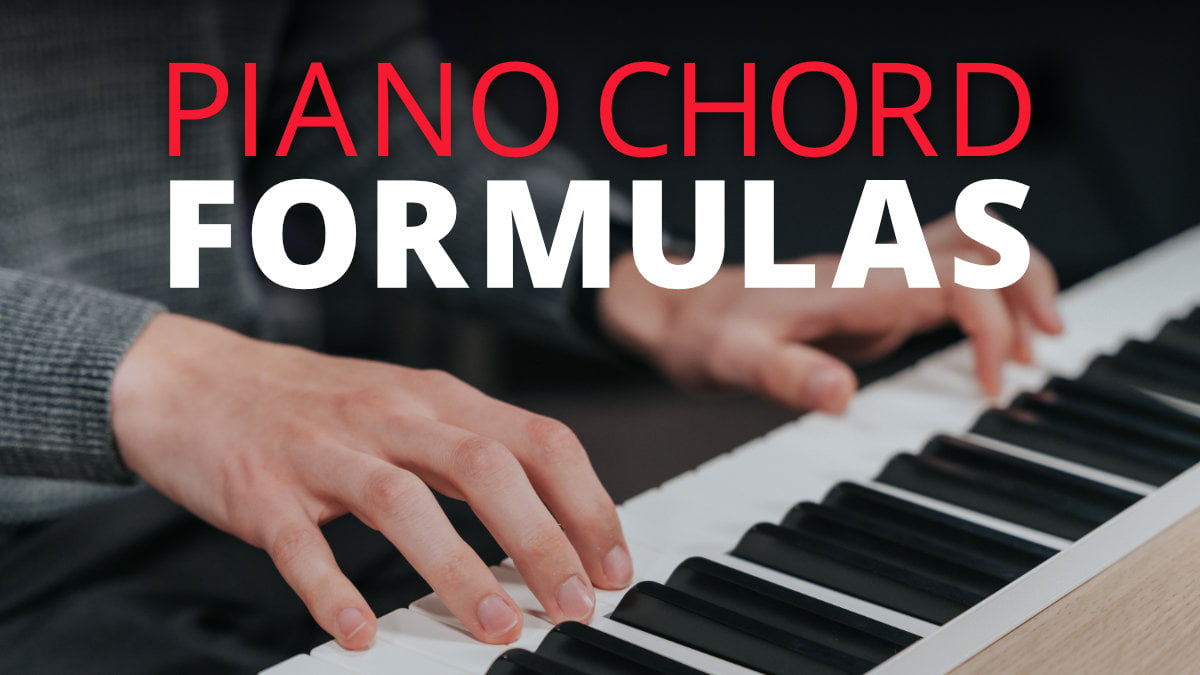
Cm7b5. Cdim7. Cadd9… If these symbols confuse you, you’ve come to the right place! This article is all about chord symbols and how to play piano chords of all types.
Click to a section if you need a quick reference or read this post from top to bottom. If you’re a total beginner, consider taking our free Chord Hacks course. That’s four free piano lessons about one of Western music’s most foundational concepts: chords!
7th Chords & Chord Extensions
Other Types of Chords:
The following chords are usually played as triads, meaning they’re three-note chords. However, sometimes musicians will play these as four-note chords by doubling the root note.
🎹 WORD OF THE DAY: ROOT A chord’s root is the note it’s built on and named after. For example, the root note of a Cm chord is C, and the root note of a B♭maj7 chord is B-Flat.For each chord type in this article, we’ll use C as the root as an example. We’ll also list the common name, chord chart symbol, and formula for each type of chord. The formula is based on the C Major scale.
Name: C Major
Chord symbol: C
Formula: 1-3-5
Let’s start with one of the simplest and most popular types of chords: major chords! Major chords sound “happy” and are built on the first, third, and fifth note of the major scale. If you know intervals, you can also think of a major triad as being a minor third on top of a major third.
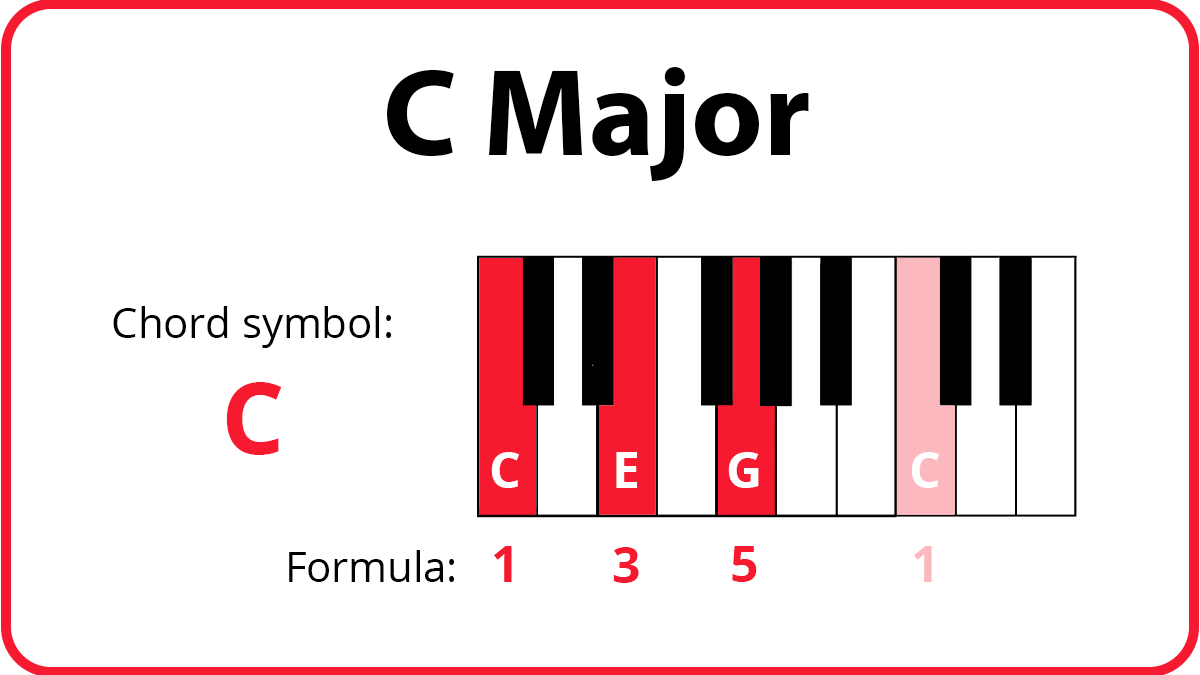
Name: C Minor
Chord symbol: Cm
Formula: 1-♭3-5
The minor chord is a close relative of the major chord. Minor chords sound “sad” and are built on the, first, flat third, and fifth note of the major scale. We flat the third by lowering that note a half-step. In Cm, E becomes E♭. You can also look at this triad as a major third over a minor third.
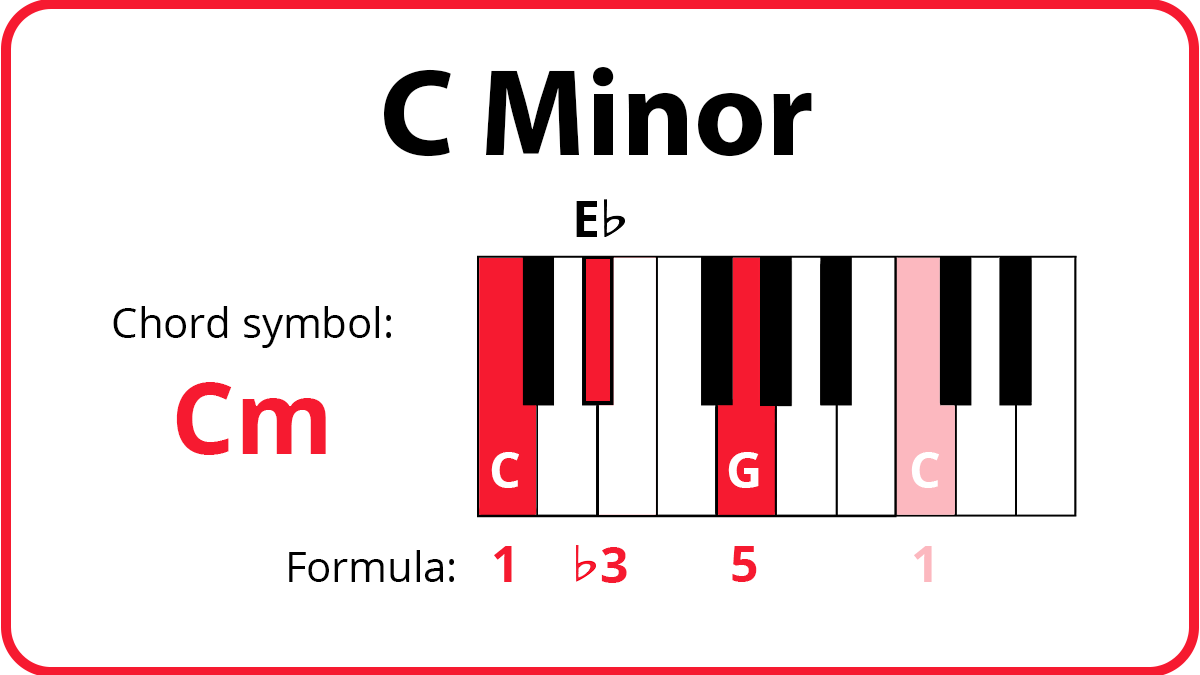
Name: C Diminished
Chord symbol: Cdim
Formula: 1-♭3-♭5
You can think of diminished chords as minor chords that have been “shrunk.” Like the minor chord, the third in this chord is lowered by a half-step. The chord further “shrinks” because we also lower the fifth by a half-step. The resulting chord can sound jarring, but when used appropriately, adds a dramatic flair to a song.
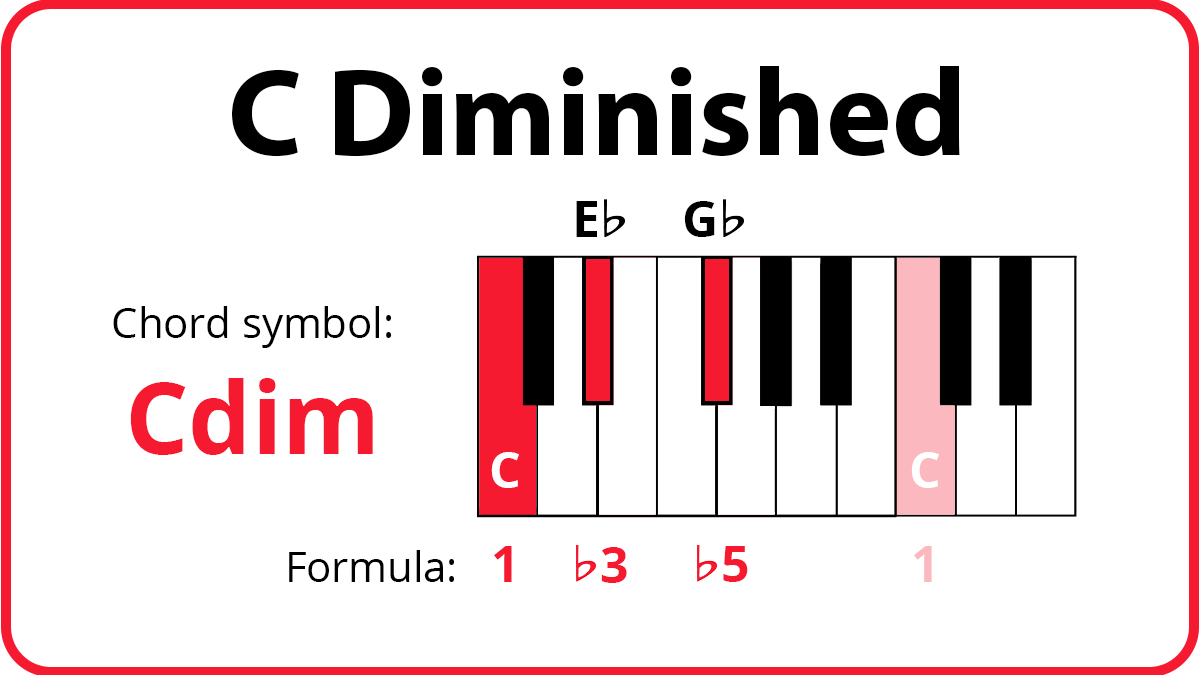
Name: C Augmented
Chord symbol: Caug or C+
Formula: 1-3-#5
Augmented chords can be thought of as “wider” or “bigger” than a major chord. In an augmented triad, we take a major chord and raise the fifth by a half-step.
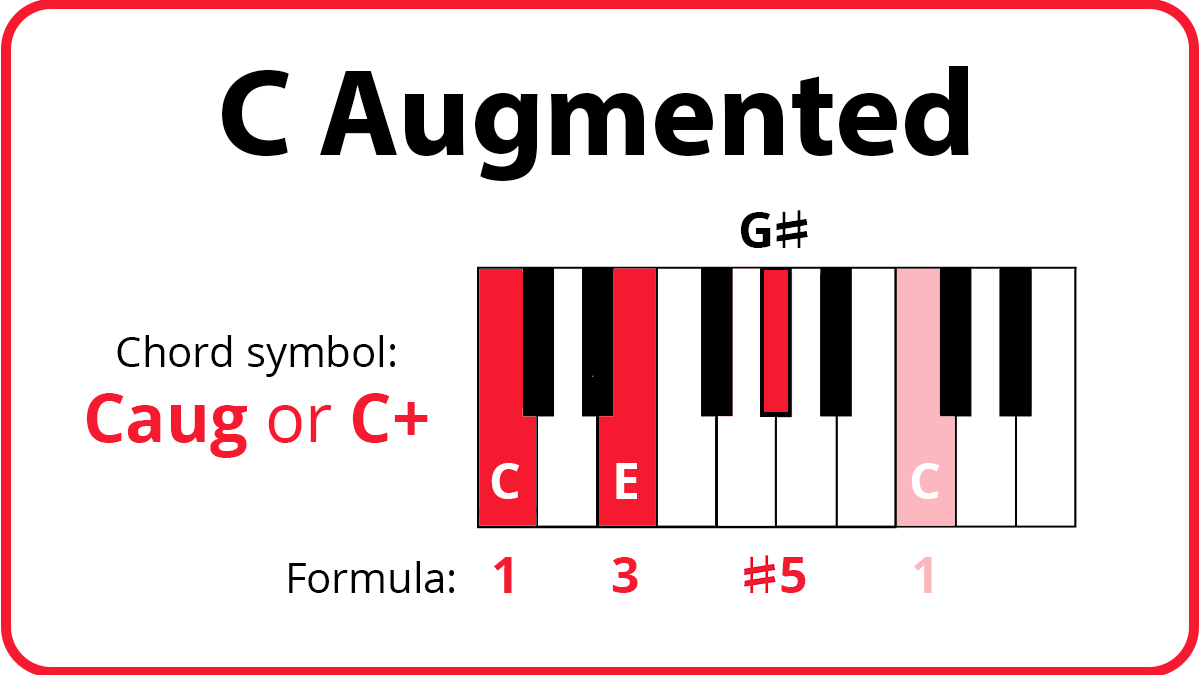
🔥 Pop Quiz!
See if you can name what notes are in these chords. Answers are at the bottom of this post.
You can play a lot of good music using just triads, but seventh chords are where things get magical. Seventh chords quickly jazz up a song because they add an extra layer of depth and tension to your harmonies.
Name: C Major 7
Chord symbol: Cmaj7
Formula: 1-3-5-7
A major 7th chord is built by adding a major seventh to a major triad stack. These chords add a dreamy, jazzy feel to songs but still sound very “major.” Be careful not to mix up major 7th and dominant 7th chords—there is a difference!
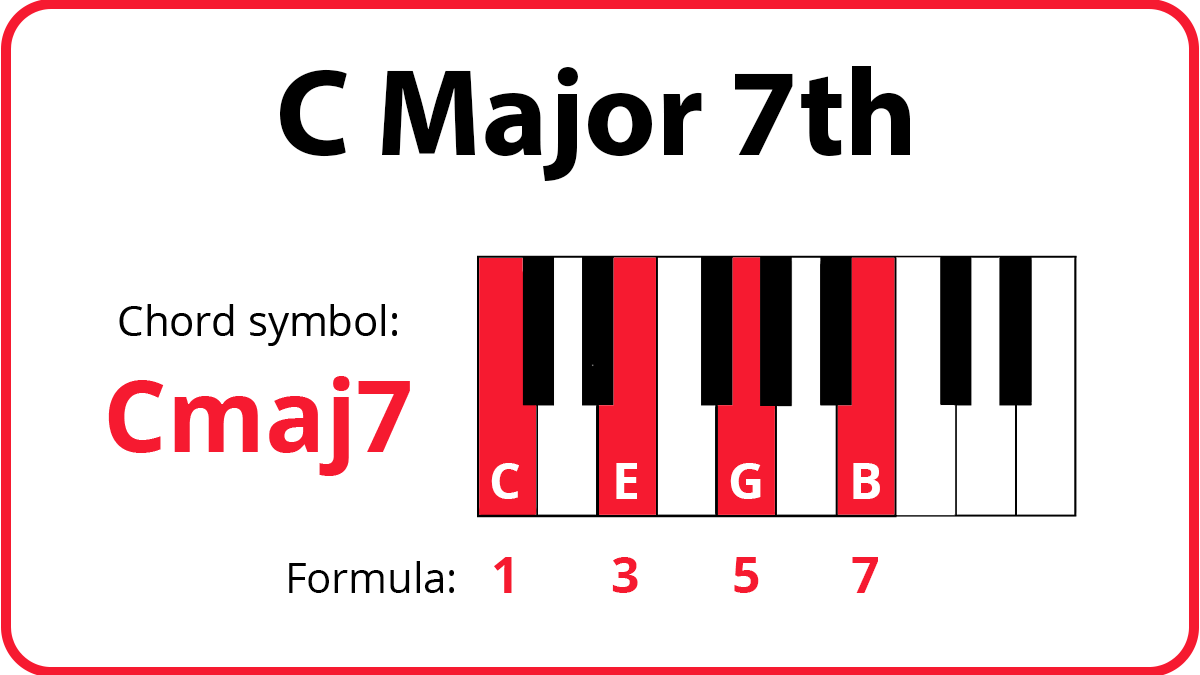
Name: C Dominant 7th or “C Seven”
Chord symbol: C7
Formula: 1-3-5-♭7
Dominant 7th chords have a flattened seventh note. This is because this chord takes the key signature of the note a perfect fifth down from the root. “Dominant” in music means “fifth.” Think of the chord’s root note (C) as the fifth note of a scale. Count down a perfect fifth, and you’ll land on F. F Major has one flat (B). Therefore, C7 is the dominant 7th chord of F Major and comprises C, E, G, and B♭.

Name: C Minor 7
Chord symbol: Cm7
Formula: 1-♭3-5-♭7
To create a minor 7th chord, take a minor triad (1-♭3-5) and add a minor seventh interval. If C is your root, your chord would be C-E♭-G-B♭.
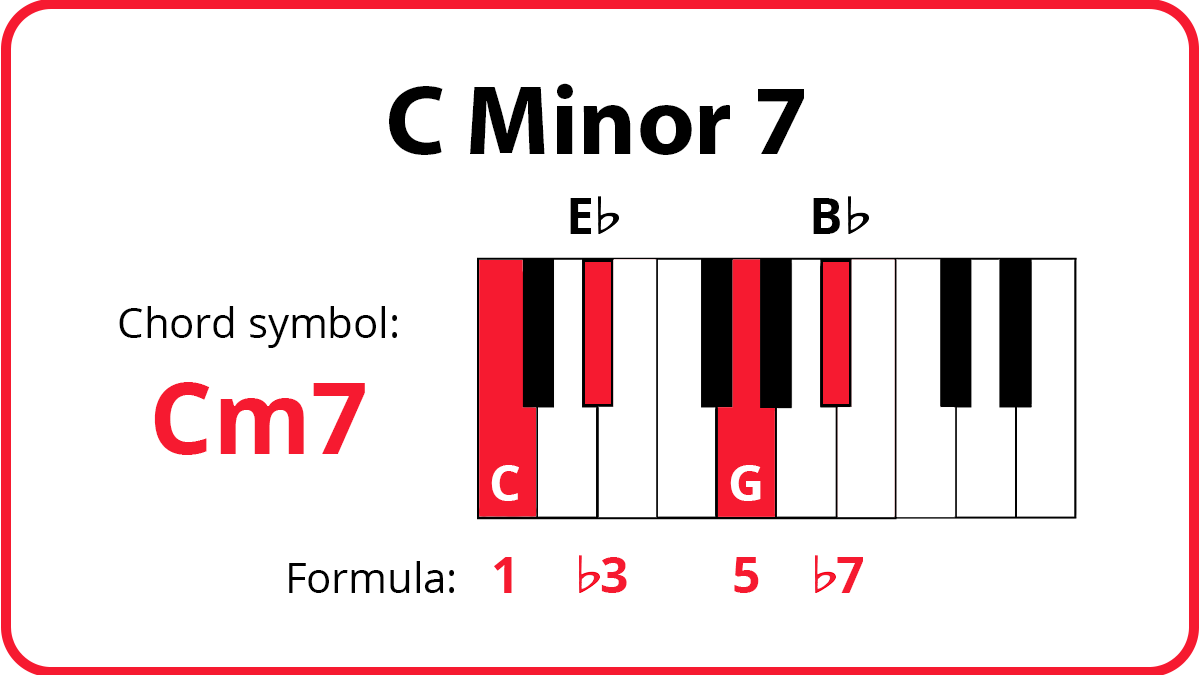
Name: C Diminished 7
Chord symbol: Cdim7
Formula: 1-♭3-♭5-♭♭7
Diminished 7th chords have a dramatic, “villainous” sound. While they may sound jarring on their own, appropriately used diminished 7th chords can add a powerful emotional punch to songs.
You can think of diminished 7th chords as a stack of minor 3rds. We double-flat the seventh, which makes the top note in Cdim7 equivalent to A. Learn more about diminished chords here.
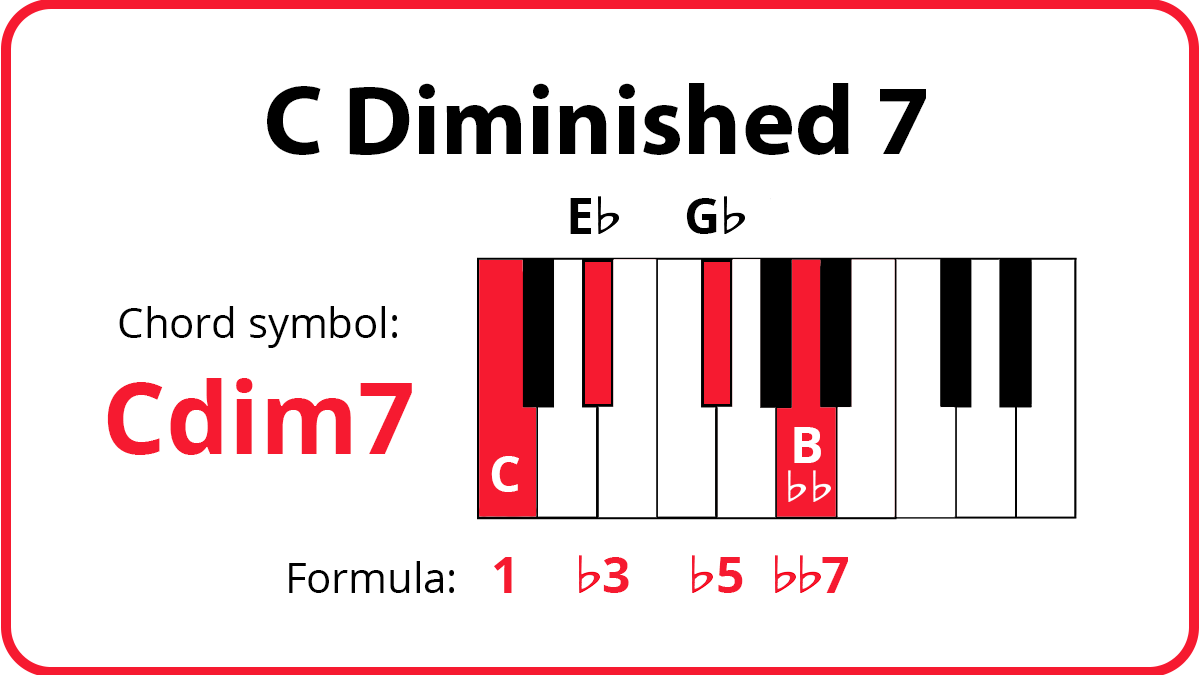
Name: Often just called “C Minor Seven Flat Five”
Chord symbol: Cm7♭5
Formula: 1-♭3-♭5-♭7
The half-diminished or flat-five chord strikes fear in many musicians because it looks super complicated, but it really isn’t! The instructions are in the name: just take a normal Cm7 chord and lower the fifth by a half-step.
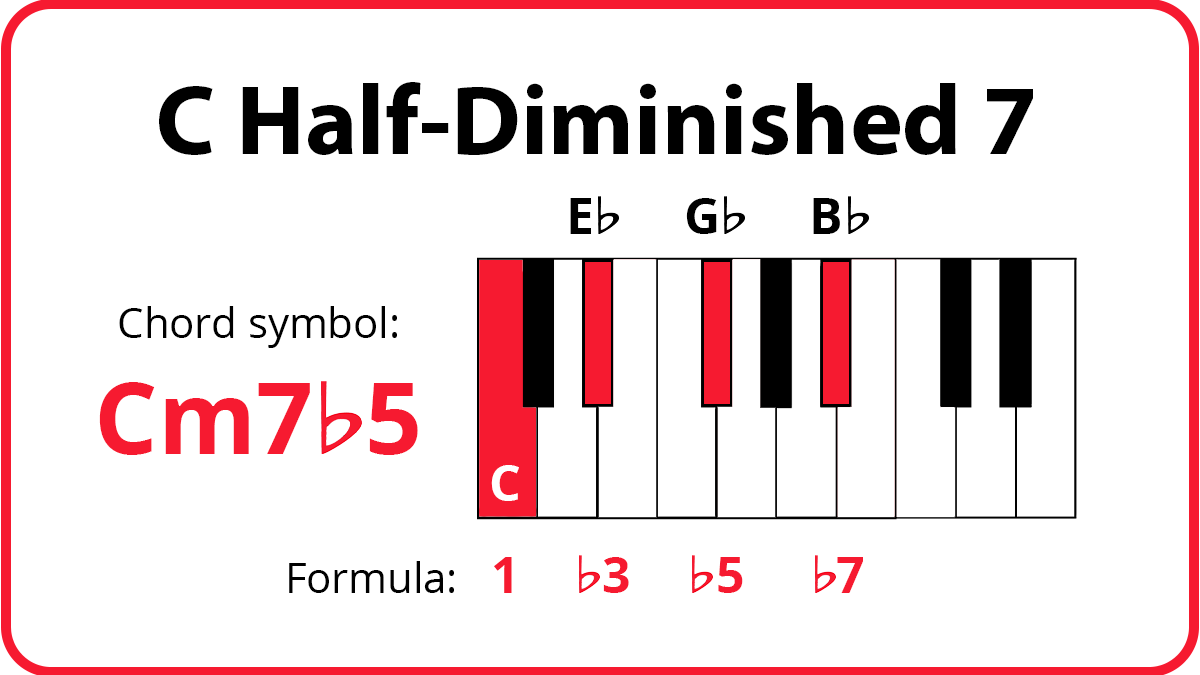
In genres like jazz, you may find funny-looking chords like C9 or even Cmaj13! These are called chord extensions. Chord extensions refer to chords that have notes beyond the octave.
Basically, we keep stacking notes on top of a seventh chord to create tension. However, a key thing to remember is that numbers greater than 7 are, by default, major intervals from the root. So, a Cm13 chord has an A, not an A♭ (as it would if we were to use the C Minor key signature), because a major ninth from C is A.
Here are examples of chord extensions with the extended part in pink:
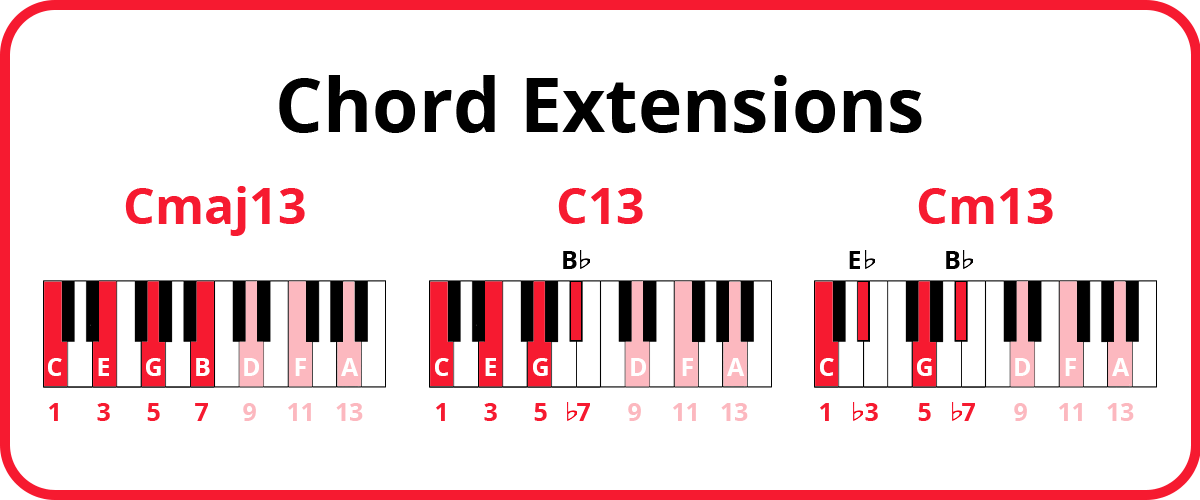
Important: You do not have to play these chords with one hand! Most pianists will split these chords across two hands. And many pianists will even omit some notes, as sometimes too many notes can create dissonance. So, experiment with omitting different notes.
🔥 Pop Quiz!
What are the notes in the following chords? Answers are at the bottom of this post.
Chords lay the foundation for Western music. But it’s easy to get bogged down by theory when you first learn about them.
Luckily, you don’t need to be an expert in chord theory to take advantage of the shortcuts chords create. Understanding the basics will unlock hundreds of songs. Learn all the key concepts you need in this FREE six-part course with Lisa Witt.
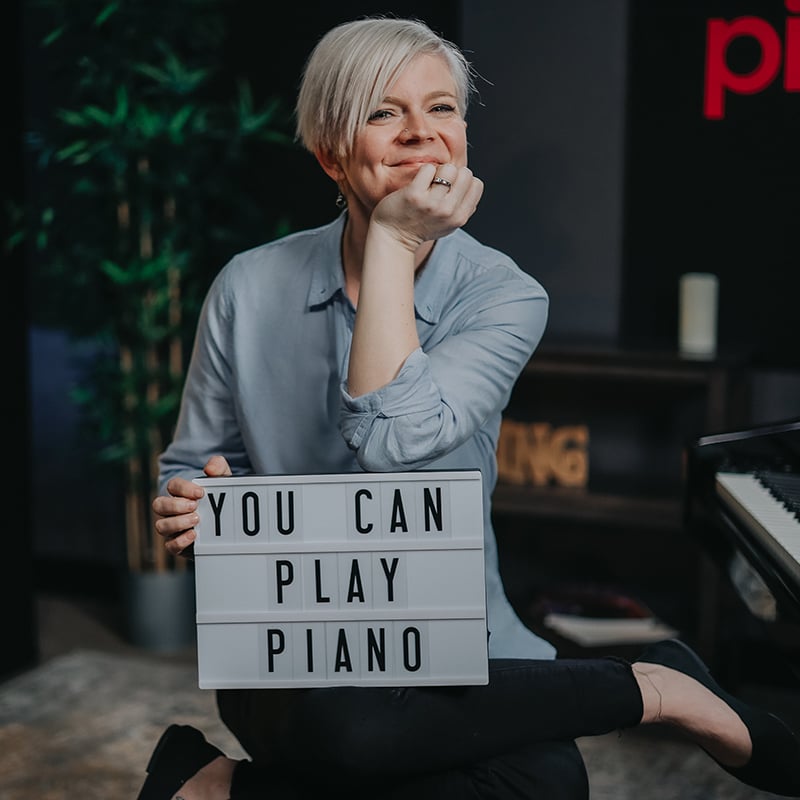
As you go along your piano chording journey, you’ll meet more interesting chord symbols and musical words that describe the context of a chord or what’s been altered. Here are some other common types of chords.
See: Diatonic Chords, Explained
Diatonic chords refer to all the chords that naturally occur on a certain scale. These chords align with the scale’s key signature. For example, here are the diatonic chords of C Major:

Interestingly, the pattern of chord types here is the same across all major keys. A ii chord in F Major will also be minor.
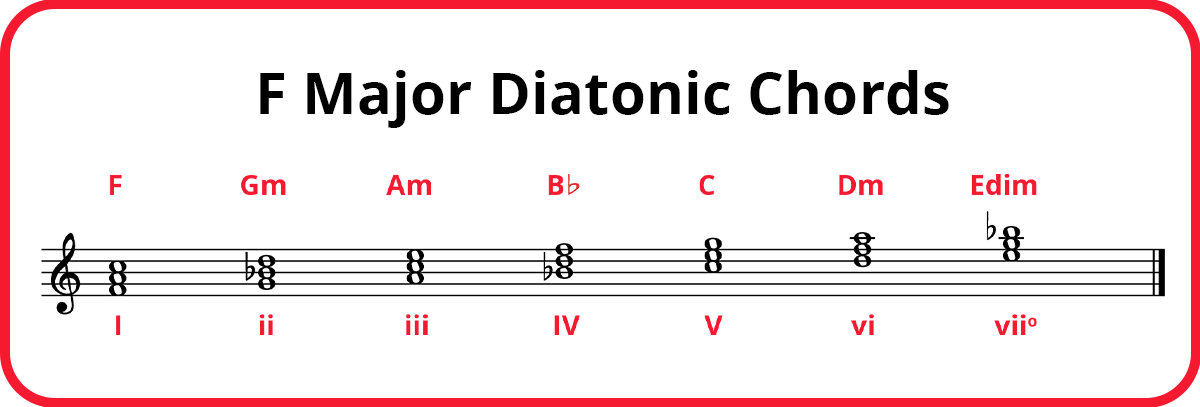
Slash chords look like a combination of a chord symbol and a single note. When you see a symbol like this, play the note to the right of the slash with your left hand as a bass note. Then, play the chord to the left of the slash with your right hand. You can think of this chord symbol as saying “play C over E.”
C/E is essentially a C chord in first inversion. Slash chords are how we notate inverted chords in a chord chart.
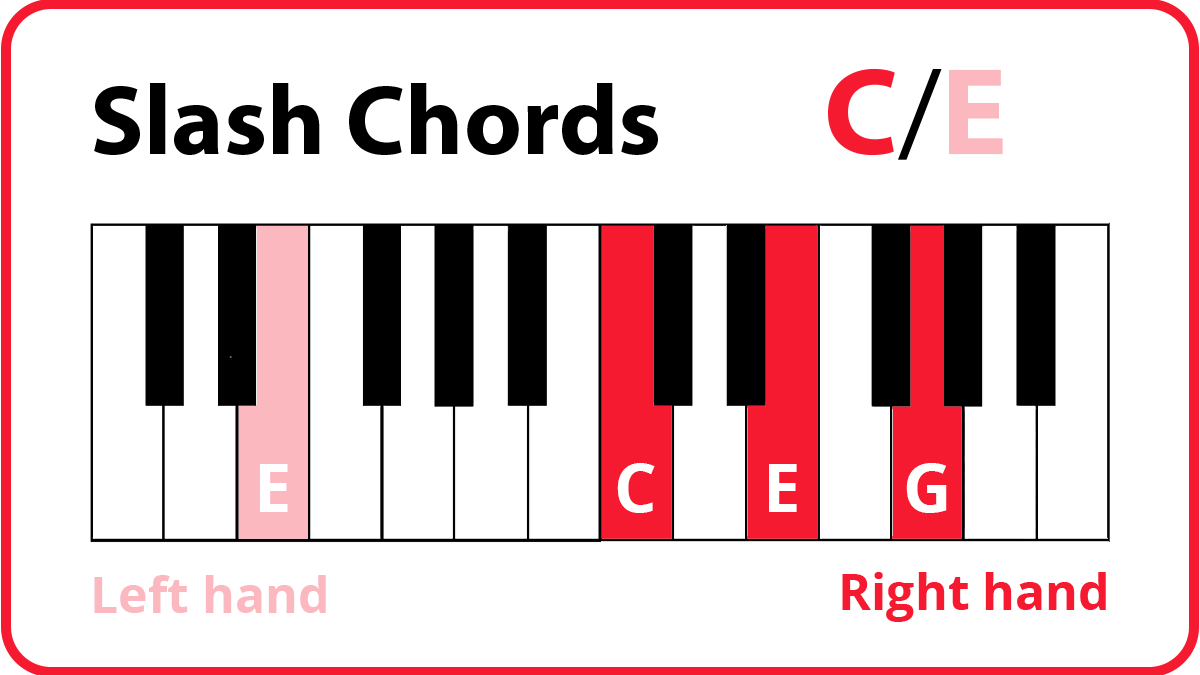
In this case, “sus” means “suspended.” Sus chords are when we suspend a middle tone and replace it with another.
In a sus2 chord, replace the third with the second note from the root. In a sus4 chord, replace the third with the fourth note from the root.
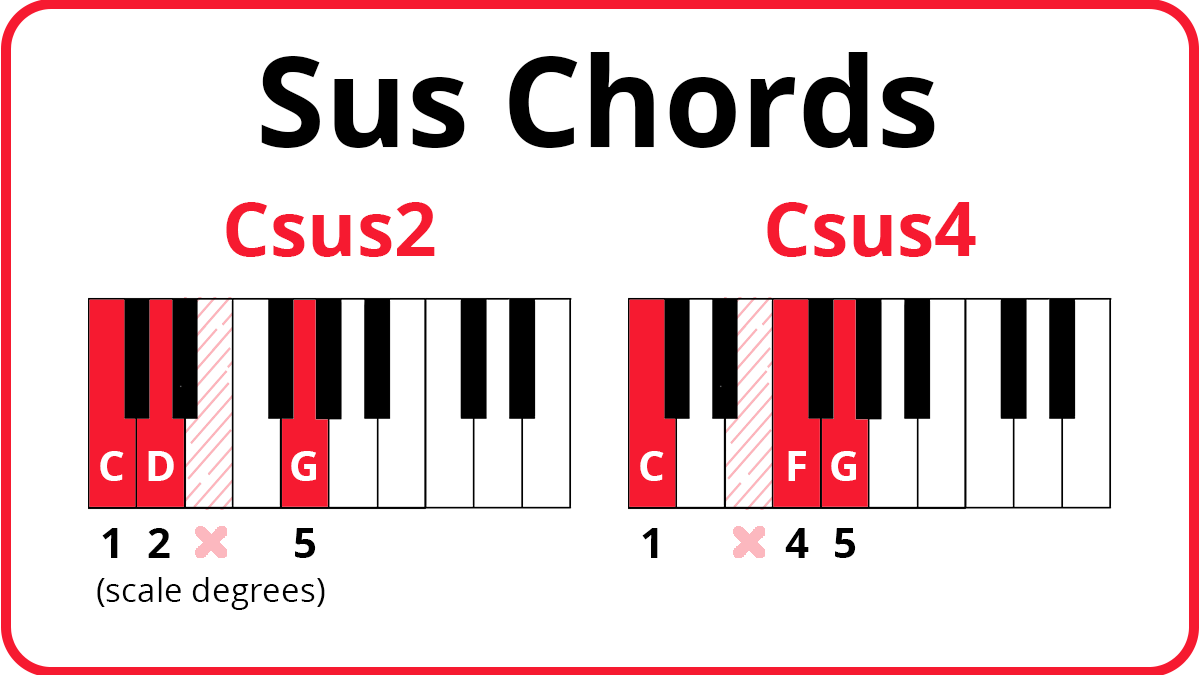
When you see “add” in a chord name, this means add an extra tone on top of your existing triad.
The difference between “Cmaj9” and “Cadd9” is that Cmaj9 includes the whole stack of thirds, while Cadd9 just means add the ninth tone to the existing C triad.
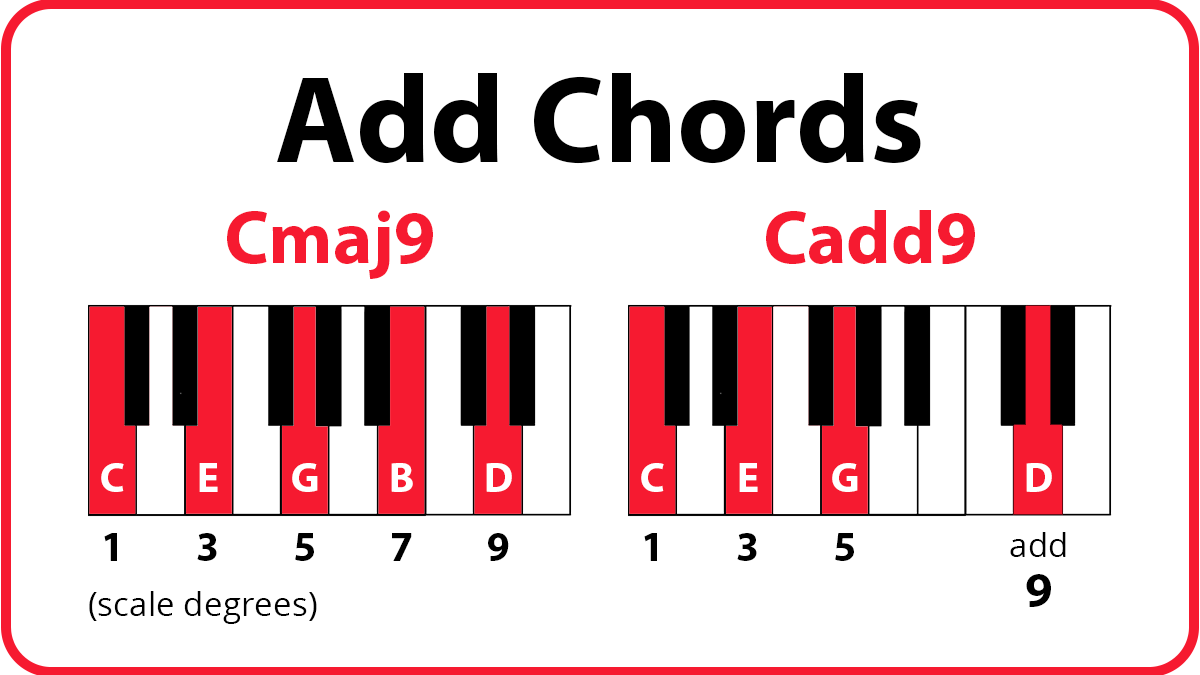
🔥 Pop Quiz!
What are the notes in these chords? Find the answers at the bottom of this post.
We hope you found this article on how to play piano chords helpful! For more free articles, interviews, tutorials, and more, subscribe to The Note, your source for the best piano content on the web!
Subscribe to The Note for exclusive interviews, fascinating articles, and inspiring lessons delivered straight to your inbox. Unsubscribe at any time.
You’ll get access to the 10-step Pianote Method, designed for modern learners in mind. Plus: learn directly from world-class Pianote Coaches, connect live with our in-house instructors, and meet piano people just like you! Learn wherever you want, whatever you want, whenever you want.
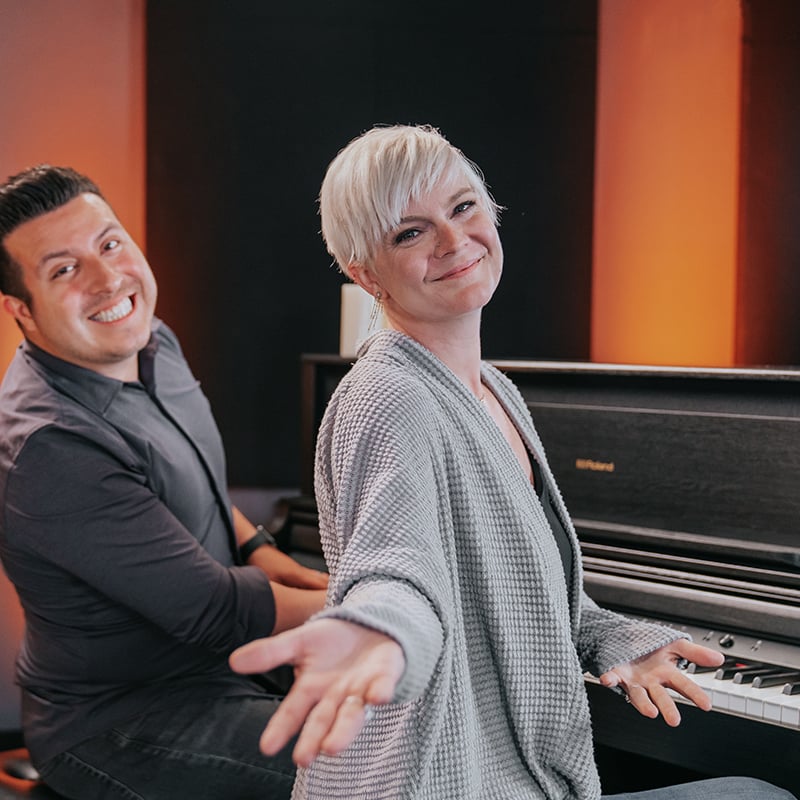
Triads
7th Chords & Chord Extensions
Other Chord Types
Charmaine Li is a Vancouver writer who has played piano for over 20 years. She holds an Associate diploma (ARCT) from the Royal Conservatory of Music and loves writing about the ways in which music—and music learning—affects the human experience. Charmaine manages The Note. Learn more about Charmaine here.


By signing up you’ll also receive our ongoing free lessons and special offers. Don’t worry, we value your privacy and you can unsubscribe at any time.
We use cookies for traffic data and advertising. Cookie Policy »